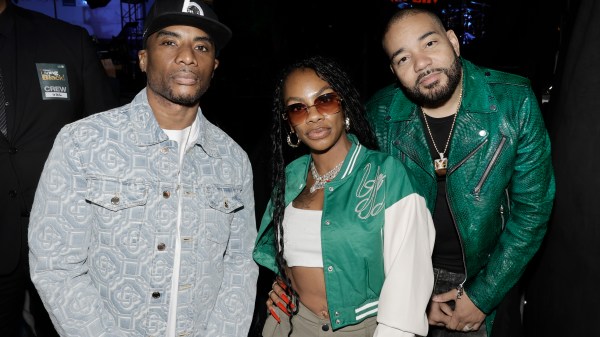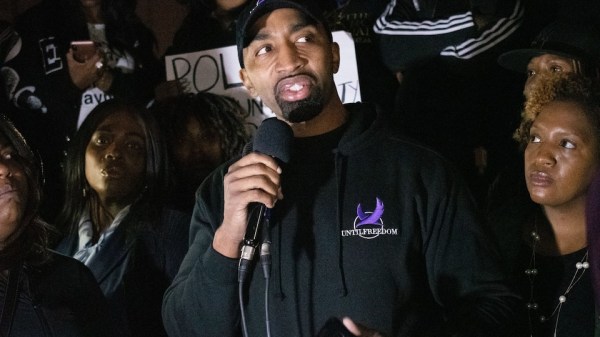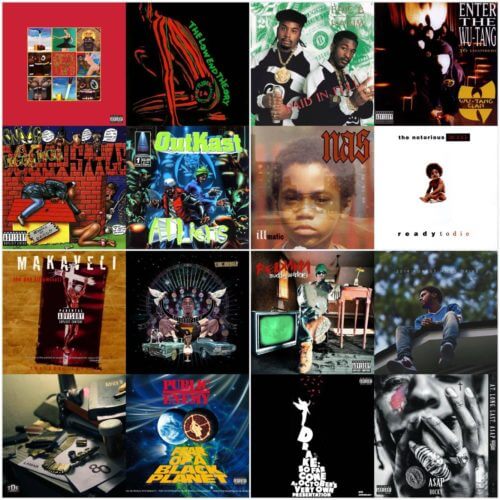Videos by According2HipHop
A Consideration Of Hip-Hop Cover Art

In the early period of recorded music, fans would flock to their local record stores and cycle through the crates and crates of vinyl that came in a multitude of varieties. Because the medium in which the music was stored was so large, the album cover was extremely important in having fans distinguish one record from another. (Do yourself a favor and Google “Ohio Players Cover Art.”)
I’ve personally never heard Pink Floyd’s The Dark Side of the Moon, but the picture of a ray inflected through a prism is a piece of art as familiar to me as any I can recall. Albeit slow to reach the levels of visual experimentation of rock music, Hip-Hop has had its fair share of classic album covers that stand tall in the minds of its listeners.
Complex magazine decided to rank the Top 50 Hip-Hop album covers of all time. Complex, ever the provocative publication, acknowledged the importance the Hip-Hop community emphasizes on artistic expression. Not just in the vocal tradition of emceeing, but in the visual expression of cover art as well. Over its relatively small life of 30 plus years, Hip-Hop has seen an evolution of its album covers from mere portraits of the artists who recorded the music during Hip-Hop’s genesis, to the thematic expressions of the album’s contents in the 90’s, and finally to the cover art with visuals you might see hanging in your local museum today.
In the days before BET and Yo! MTV Raps, many Hip-Hop artists had to rely on their album covers as a means to introduce themselves visually to fans. Therefore the album cover was a tool used to give fans an idea of who their favorite artist was. Most listeners can remember the militant and powerful image of KRS One on the Boogie Down Productions debut Criminal Minded and Rakim’s authoritative and “Dapper Dan” draped machismo on Paid in Full. Big Daddy Kane showed his fans that he was smooth and regal on the cover of Long Live the Kane. This heavy self promotion went hand in hand with the heavily braggadocios lyrical style of Hip-Hop’s golden era.
West coast gangster rap pioneer Ice T was one of the first to capitalize on the potential marketability of an album cover with his second album Power. With the album’s image of Ice T’s then wife, Darlene Ortiz, wearing a string bathing suit with gun in tow, Ice T created enough controversy to generate a buzz around his album and the sales to match. Power went on to sell over a million records and has since been his highest selling album to date. Other emcees soon followed with KRS One giving his best Malcolm X impression on By Any Means Necessary and Ice Cube putting America to rest with Death Certificate.

After the hardcore gangsta rap era began to wan, artists began taking Hip-Hop cover art to a more thematic perspective. The progression of album covers from Hip-Hop artists like A Tribe Called Quest, Outkast, Redman, Notorious B.I.G., and Nas took on themes that were meant to exemplify the music contained within the album itself rather than the emcee. While Tribe wanted to capture their afro-centric bohemian rhythms of the streets, Outkast took you through the unexplored universes of funk with ATLiens and Aquemini. Redman chronicled how his music broke from the underground and into the mainstream with Dare Iz A Darkside and Muddy Waters. Biggie took an autobiographical approach to his classic albums Ready to Die and Life After Death. Nas went with the theme of “a boy to a man to a king” set squarely in Queensbridge housing projects. Many can recall Tupac’s last recorded album, Makaveli, which set a firestorm of rumors and innuendo when fans scoured the album’s cover art for clues about his “faked death.”
I myself as a fan can remember trying to collect these discs so that I could display them in order of succession in my music collection. But with the advent of digital media, that once spectacular display of album covers soon found a neglected corner of a crowded room or a storage box. The contents ripped and shipped from their compact discs to the six by three inch device that was my iPod.
When the Silicon Valley juggernaut that is Apple released iTunes 7.0 in September of 2006 with its cover flow feature, those archaic remnants of cds and vinyl finally found a place in the digital age. Fans could now cycle through classic album covers using the click wheel of an iPod or swipe their fingers through their record collection with an iPhone or iTouch. The album cover suddenly became important again. Even Jay-Z who did an ad for Rhapsody rewarded his fans by brilliantly walking through the various album covers in his career to promote the digital music service.
Never to be outdone and ever pushing Hip-Hop to its limits, Kanye West upped the ante of cover art by commissioning Japanese contemporary artist Takashi Murakami (most famous for the Louis Voutton pastel design) to oversee the art direction in the final installation of his education themed series, Graduation. He later commissioned contemporary artist George Condo to do the controversial cover art to his critically acclaimed masterpiece, My Beautiful Dark Twisted Fantasy.
Since then many have decided to pick up the torch of the 90s tradition of thematic album covers and even add some artistic merit to their work as well. Section 80, So Far Gone, Return of 4eva, and Friday Night Lights all have visually striking cover art and are merely mixtapes.
With the myriad of mixtapes that hit the various Hip-Hop pages on the web everyday, Kendrick Lamar, Drake, Big K.R.I.T., and J. Cole may have took a page from their predecessors in the vinyl business realizing that in order to stand out from a crowded room it helps when the product is visually appealing. While it was likely the content of these respective mixtapes that laid the foundation for this new crop of Hip-Hop superstars, it may have been the cover art that helped the world take notice.
By Darrell Baxter























